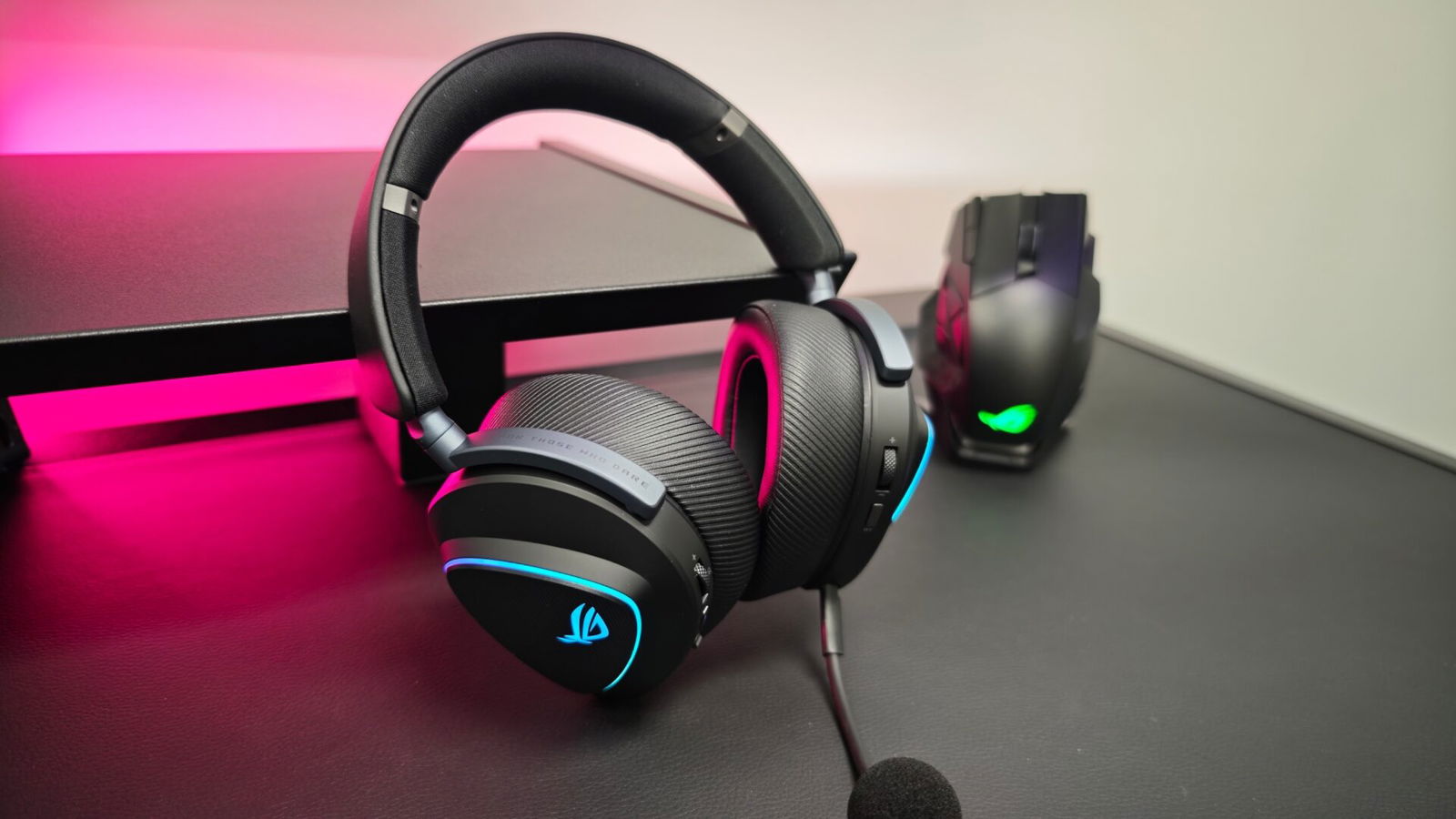The headset game has evolved a lot over the years, but the one constant (for me anyway) has always been comfort when in use. If I am going to be wearing this headset for an extended period of time, it has to be comfortable and sound good in that order. The ASUS ROG Delta II recently became available, and I was keen to see how good it could be, since it is quite striking visually.
First thing we always do is the unboxing, and it’s pretty standard stuff this time around. The headset is sitting there nice and pretty, but there is no carrying case or fabric bag to conceal it. In the box, you get the headset itself, the microphone arm to attach, two sets of ear cushions (a ROG Hybrid fabric set and a ROG Leather set), the USB-C dongle, a USB-C to USB-A adaptor dongle, a USB-A to USB-C charging cable, a 3.5mm audio jack cable, and the various manuals and quick start guides.
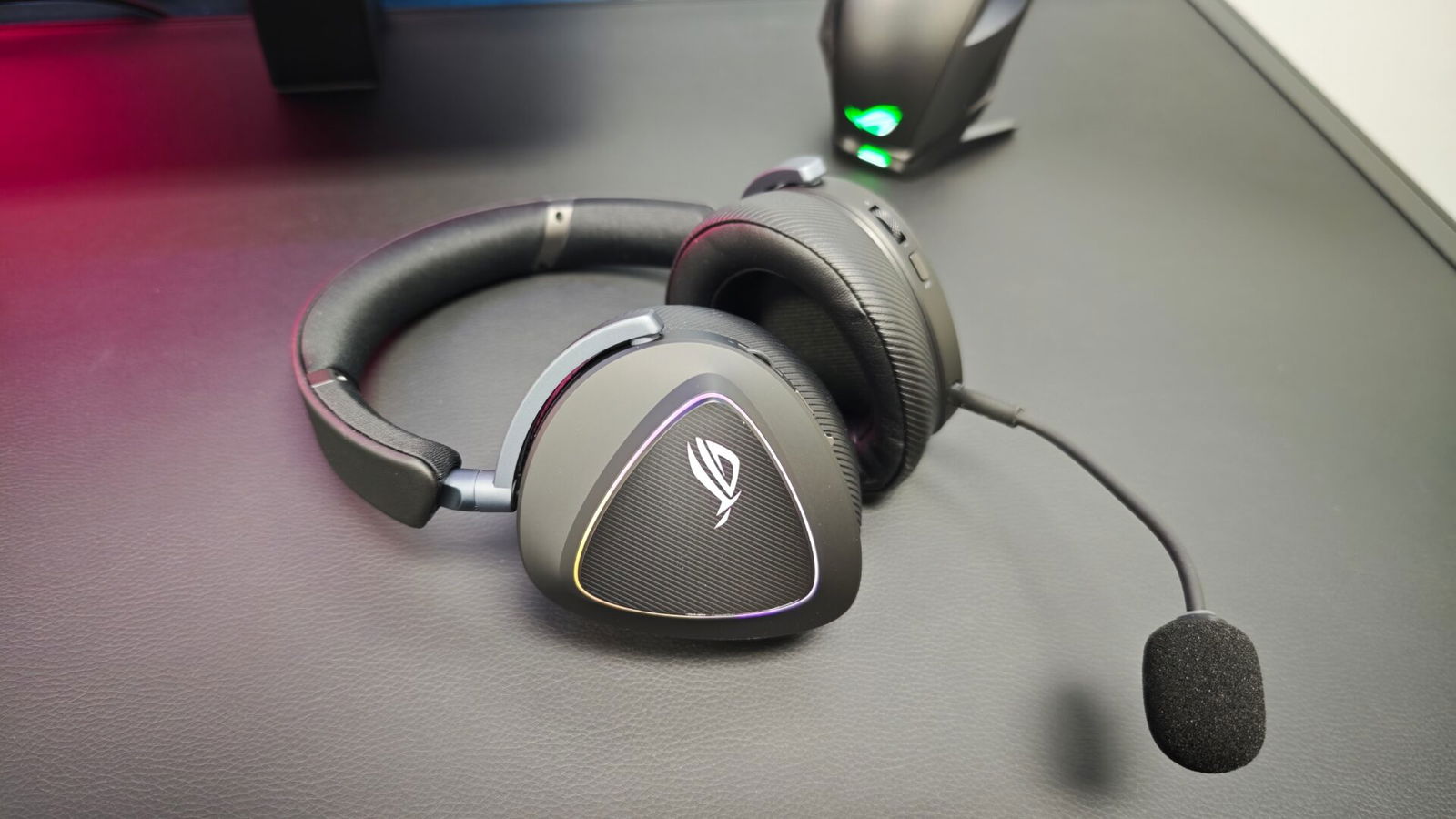
The ROG Delta II itself is very nice to look at and incorporates the signature ROG triangular ear cap design. Some wonderful RGB is found on the outside of either ear cap, and it is not too much to be overpowered, either.
The headset features just a few buttons and dials, which is a really nice feature to me because there is far less to confuse yourself with in the heat of the moment and saving you from having to remove the headset to look at exactly what button you’re pressing. A simple dial on either ear cap, 2.4 GHz audio control on the left and Bluetooth audio control on the right and a function button for both as well, and nothing else (apart from the on switch)
“Weighing in at a paltry 318 grams (less than a pound), the ROG Delta II felt weightless on my head and required no adjustment whatsoever for ease of use and comfort.”
The first thing I physically noticed was the weight of the headset itself, as it is exceptionally light. Weighing in at a paltry 318 grams (less than a pound), the ROG Delta II felt weightless on my head and required no adjustment whatsoever for ease of use and comfort. The same could not be said for my partner, as when she put it on, the top of the headband was lifted off her head, even at the smallest size setting. Frequent nights playing Gran Turismo 7 for multiple hours left me with no abnormal neck strain or ear discomfort physically.
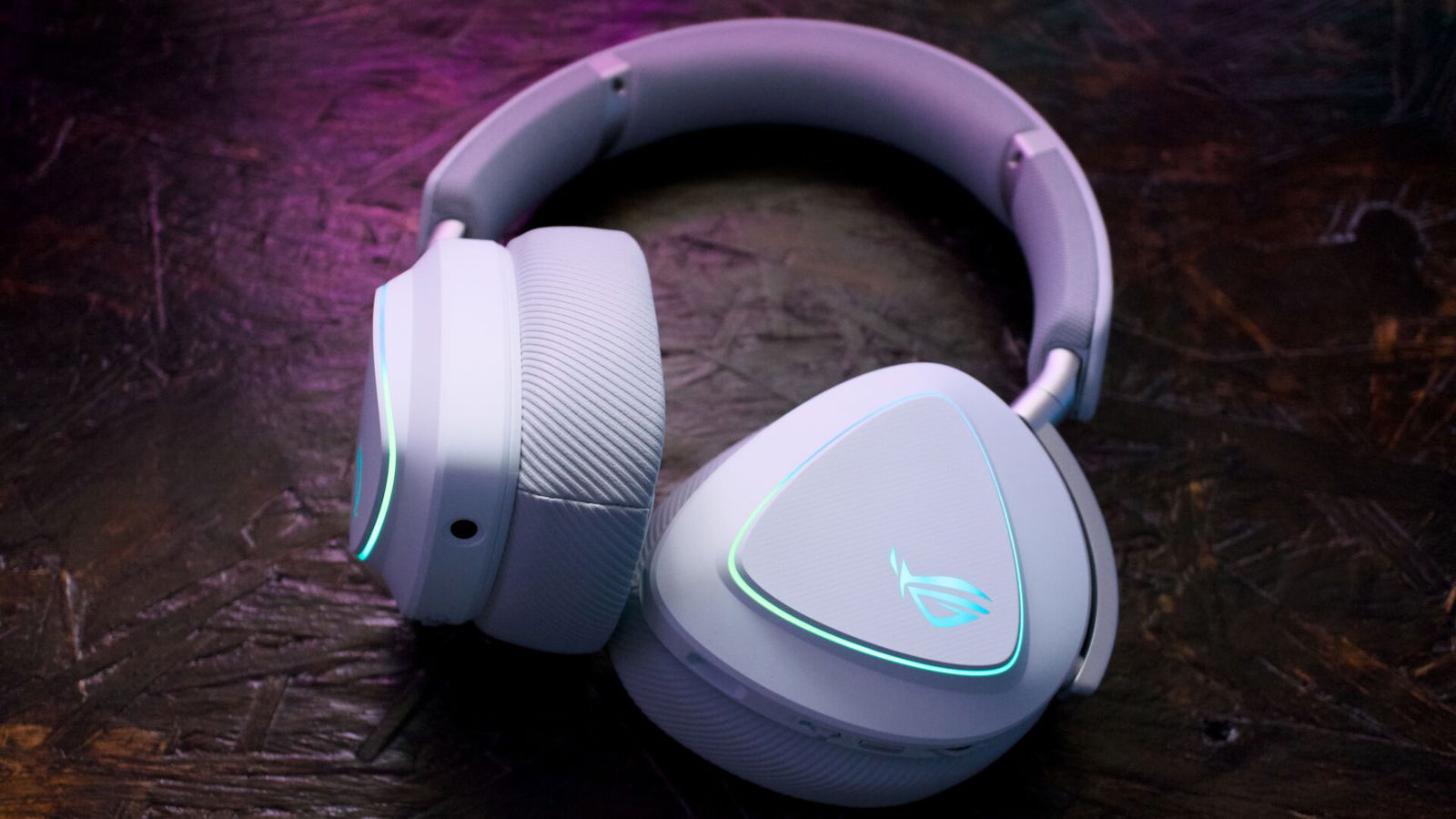
The discomfort I was left with after a multi-hour driving session one night was the ring of sweat that had developed around both ears, and it was the ROG Leather ear cushions to blame. I went back to the box and quickly fished out the ROG Hybrid fabric ear cushions and fumbled around affixing those on for about 10 minutes longer than it should have taken me. Subsequent gaming sessions did not see the return of the ring of perspiration/condensation.
Swapping out the ear cushions was not as easy as I had hoped or expected. The replacement set of ear cushions for the ROG Delta II are supposed to be easy to remove and change out, but they feature such a flimsy seal ring that getting the material into the slot that surrounds the ear cap in a uniform manner felt like a war of attrition at times. Once they were finally on, I could immediately tell the difference, and the leather set never saw the light of day again. They are comfortable, breathable, and fit perfectly; what else could anyone ask for in a set of ear cushions?
As for functionality, the ROG Delta II work remarkably well. ASUS has taken a master-of-some-trades approach rather than a Jack of all trades approach when it comes to what this headset can do. First of all, it is fitted with 50 mm titanium-plated diaphragm drivers, which provided me with some of the most life-like sound I have heard through a headset. Reduced distortion and sharp trebles allowed me to experience phenomenal sound without being overwhelmed by bass.
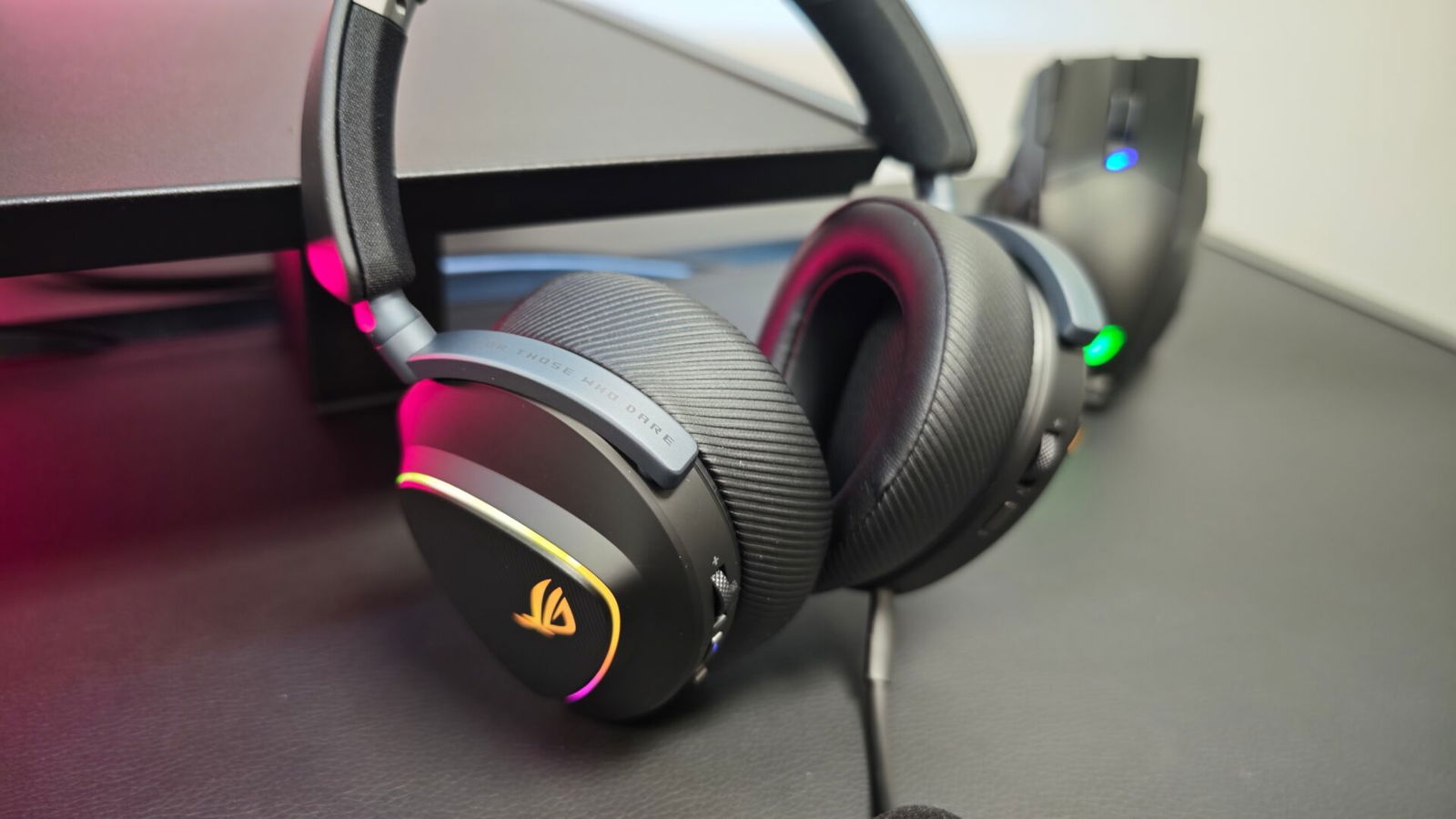
As important as sound quality is to a headset, similarly is the battery life. The ROG Delta II is equipped to handle a whopping 110-hour battery life when the RGB is shut off. With the RGB on, the headset still boasts an impressive 24-hour battery life. Both of these figures are while using the 2.4 GHz dongle, and when you switch over to Bluetooth, both numbers grow to 140 hours without RGB, and 27 hours with RGB.
These figures were pretty much exactly what I was able to achieve using both Bluetooth and the dongle. I remember sitting in my chair in the middle of a race, thinking to myself that I’d been using this thing for a long time, when is the battery going to run out. Hand on heart, two minutes later I got a voice message in my ear saying battery low. One of the best things about the ROG Delta II is that a quick 15-minute charge will get you 11 hours of battery life!
One of the best features of the ROG Delta II is its Tri-Mode Connectivity, which allows you to connect the headset via a 2.4 GHz wireless dongle, Bluetooth, and even through a 3.5 mm audio jack. This allows you to connect the headset to any and all of your devices, such as PC, Mac, PS4 & PS5, Nintendo Switch, Xbox One & Xbox Series X|S. It should be noted that the Xbox consoles can only connect via the 3.5 mm audio jack.
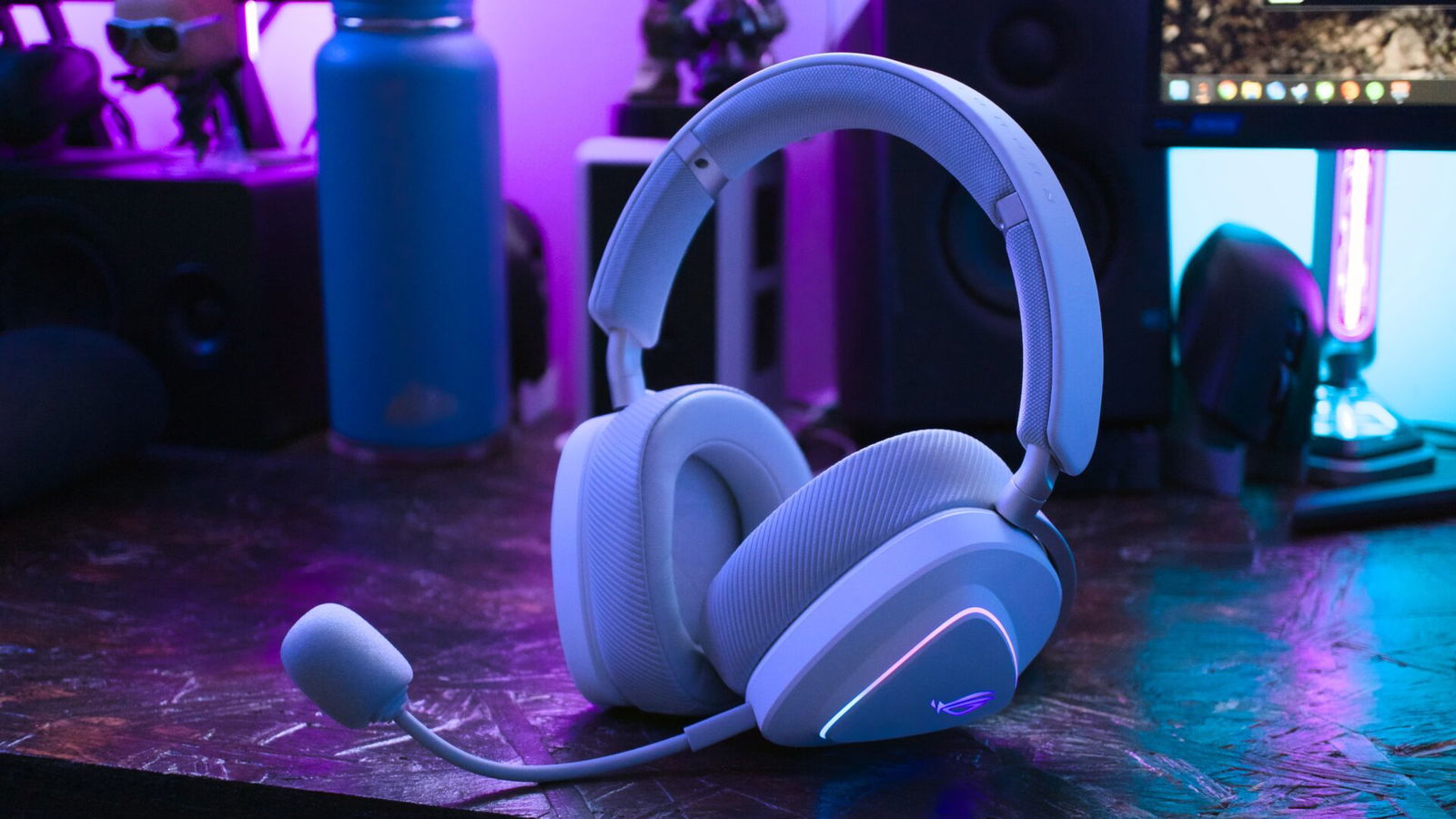
When playing multiplayer games or even answering phone calls, the most important thing for the people you are with is going to be your audio quality. The ROG Delta II really shines here, and that is thanks to its 10 mm Super-Wideband Boom Microphone. When it comes to detachable mic arms, this one is exceptional. My teammates could hear me crystal clear with no feedback or distortion, which is all one can really hope for with gaming headsets.
The mic arm even features a red light at the end of it to indicate the mic is muted. While this is wonderful in theory, in practice, it is pretty challenging to see in one’s peripheral vision. I would have preferred the light to blink intermittently to catch the eye, but we can’t have it all, can we?
“The ROG Delta II headset from ASUS is about as good as a headset can get…”
While most headsets these days are leaning into noise cancellation in their products, the ROG Delta II does not feature a bespoke noise cancellation feature. The wearer gets a form of noise isolation when wearing the headset, as the ear cushions do a good job of creating a seal to keep ambient noise out, but it’s not a dedicated noise cancellation system. I’m actually fine with all of that, as it can become somewhat bothersome to either turn off the noise cancellation or remove the headset entirely when someone in the room needs your attention. At least now I could keep the headset on and still hear what was being said to me.
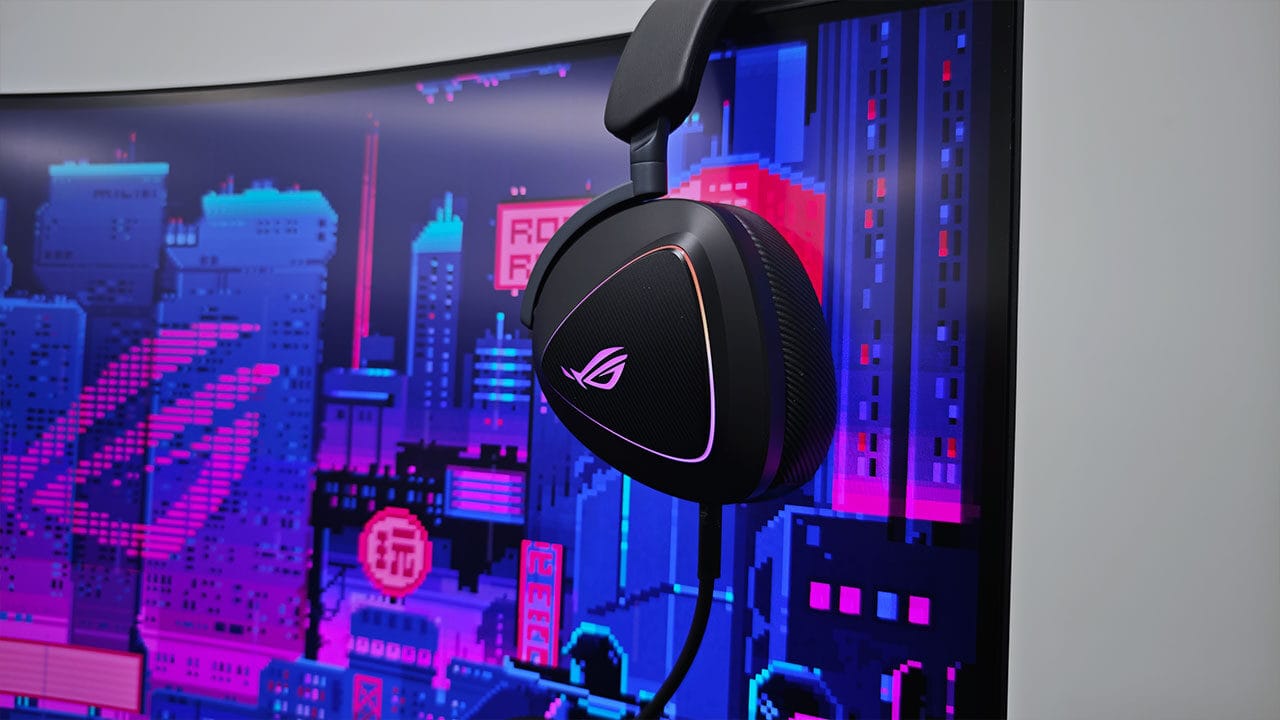
The ROG Delta II features a very low latency connection to whatever you are using it with, to ensure that the delay between what is said to you and when you actually hear it is at its absolute minimum. This can often mean the difference between victory and defeat in FPS games like Call of Duty, and it can often mean the difference between crashing and letting a fellow driver know that you’ve missed your braking point so they can take evasive action.
The ROG Delta II headset from ASUS is about as good as a headset can get, but it feels like there is something missing. I don’t know if it’s the noise cancellation or something else, but the price tag of $339.99 CAD does feel a bit much. The spectacular sound quality and low-latency communication are amazing features, and I can still recommend the ROG Delta II to audio enthusiasts in the gaming environment. Where you want to be careful is getting drawn into wanting features that don’t suit it. This headset does audio very well, and that is more than enough for me.
- ROGDeltaII
